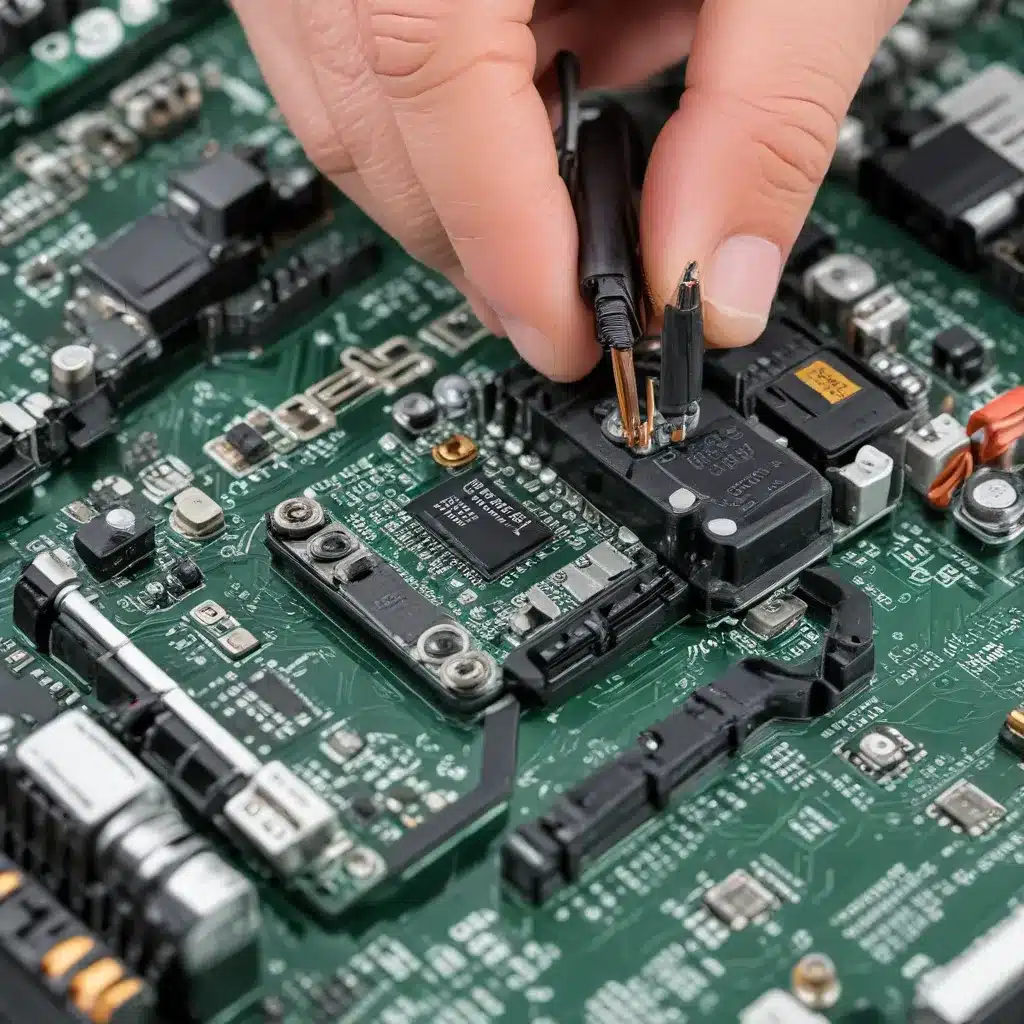
As an experienced IT professional, I’ve encountered my fair share of laptop power-related problems. From dead batteries to malfunctioning chargers, these issues can be incredibly frustrating for users. However, with the right troubleshooting steps and a deep understanding of laptop power circuits, many of these problems can be quickly identified and resolved. In this comprehensive article, I’ll guide you through the process of diagnosing and resolving common power-related issues in laptops.
Understanding Laptop Power Circuits
At the heart of every laptop is a complex power circuit responsible for managing the flow of electricity from the power source (battery or charger) to the various components within the device. This circuit includes several key elements, such as the charging port, battery, power management controller, and voltage regulators.
When a problem arises in the power circuit, it can manifest in various ways, including the laptop failing to power on, the battery not charging, or the device suddenly shutting down. Understanding the role of each component in the power circuit is crucial for effective troubleshooting.
Diagnosing Power-Related Issues
The first step in resolving power-related issues is to accurately diagnose the problem. Here are some common symptoms and their potential causes:
Laptop Fails to Power On
- Potential Causes:
- Drained or faulty battery
- Malfunctioning power adapter or charging port
- Issue with the power management controller or voltage regulators
Battery Not Charging
- Potential Causes:
- Faulty battery
- Damaged charging port or power adapter
- Software-related issues with the power management system
Sudden Shutdowns or Unexpected Power Loss
- Potential Causes:
- Overheating issues due to blocked airflow or failing fans
- Power management software or driver problems
- Hardware failures in the power circuit
Abnormal Battery Behavior
- Potential Causes:
- Degraded or faulty battery
- Incorrect power management settings
- Issues with the battery charging circuit
By carefully analyzing the symptoms and considering the potential causes, you can often narrow down the root of the problem and move on to the appropriate troubleshooting steps.
Troubleshooting Power-Related Issues
Once you’ve identified the potential problem, it’s time to start the troubleshooting process. Here are some steps you can take to resolve common power-related issues:
Checking the Power Adapter and Charging Port
- Inspect the power adapter and charging port for any physical damage or signs of wear.
- Test the adapter with a multimeter to ensure it’s providing the correct voltage and current output.
- Try using a different power adapter or charging cable to isolate the issue.
Resetting the Power Management System
- Perform a power management system reset, which involves shutting down the laptop, unplugging the power adapter, and removing the battery (if removable).
- Wait for a few minutes, then reinsert the battery and reconnect the power adapter.
- Power on the laptop and see if the issue has been resolved.
Updating Power Management Drivers and Software
- Check for any available power management driver or firmware updates from the laptop manufacturer’s website.
- Install the latest updates to address any known power-related issues or compatibility problems.
Checking Battery Health and Calibration
- Use the laptop’s built-in battery health monitoring tool or a third-party utility to assess the battery’s condition.
- If the battery is degraded, consider replacing it with a new one.
- Perform a battery calibration procedure to ensure accurate battery level reporting.
Addressing Thermal Management Issues
- Ensure that the laptop’s cooling system is functioning correctly by checking for blocked air vents or malfunctioning fans.
- Clean the laptop’s internal components and reapply thermal paste to the CPU and GPU, if necessary.
- Adjust power management settings to optimize cooling and prevent overheating.
Seeking Professional Assistance
- If the troubleshooting steps above do not resolve the issue, it may be necessary to seek assistance from a qualified IT professional or the laptop manufacturer’s support team.
- They can perform more advanced diagnostics and provide guidance on potential hardware replacements or repairs.
By following these troubleshooting steps, you’ll be well on your way to resolving a wide range of power-related issues in your laptop. Remember, the key to successful troubleshooting is a methodical approach, a good understanding of the laptop’s power circuit, and a willingness to explore both software and hardware-related solutions.
Preventive Measures for Laptop Power Issues
In addition to troubleshooting, there are several preventive measures you can take to minimize the risk of power-related problems in your laptop:
- Maintain a Clean and Well-Ventilated Laptop: Regularly clean the laptop’s air vents and internal components to ensure proper airflow and prevent overheating.
- Properly Store and Charge the Battery: Follow the manufacturer’s recommendations for battery storage and charging to prolong its lifespan.
- Keep Power Management Settings Optimized: Adjust power management settings to strike a balance between performance and battery life.
- Update Drivers and Firmware Regularly: Stay on top of software updates to address any known power-related bugs or compatibility issues.
- Consider Battery Replacement: Replace the battery when it reaches the end of its lifespan to avoid unexpected power issues.
By incorporating these preventive measures into your laptop maintenance routine, you can significantly reduce the likelihood of encountering power-related problems and ensure the long-term reliability of your device.
Remember, the ITFix blog is a valuable resource for IT professionals and tech enthusiasts seeking practical tips, in-depth insights, and reliable solutions. Be sure to explore our other articles covering a wide range of technology topics, including computer repair, software troubleshooting, and IT best practices.












